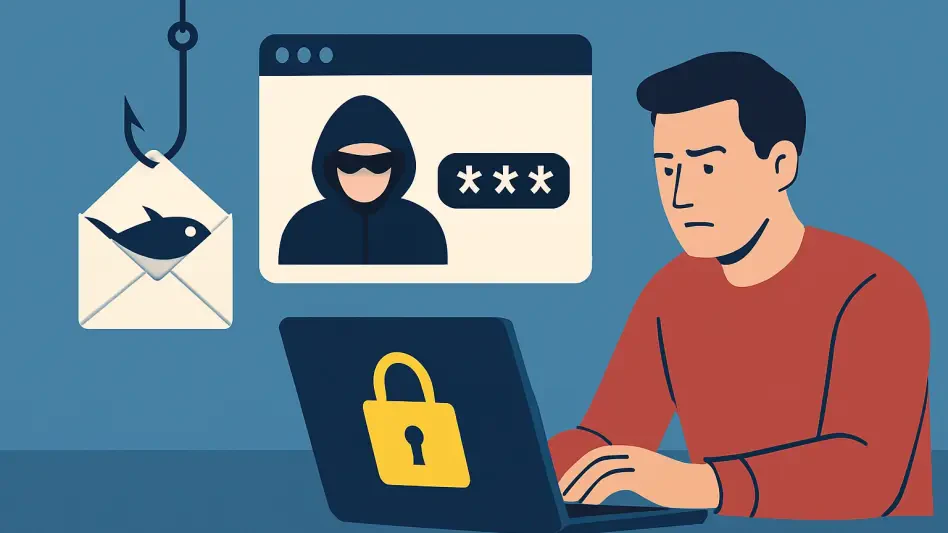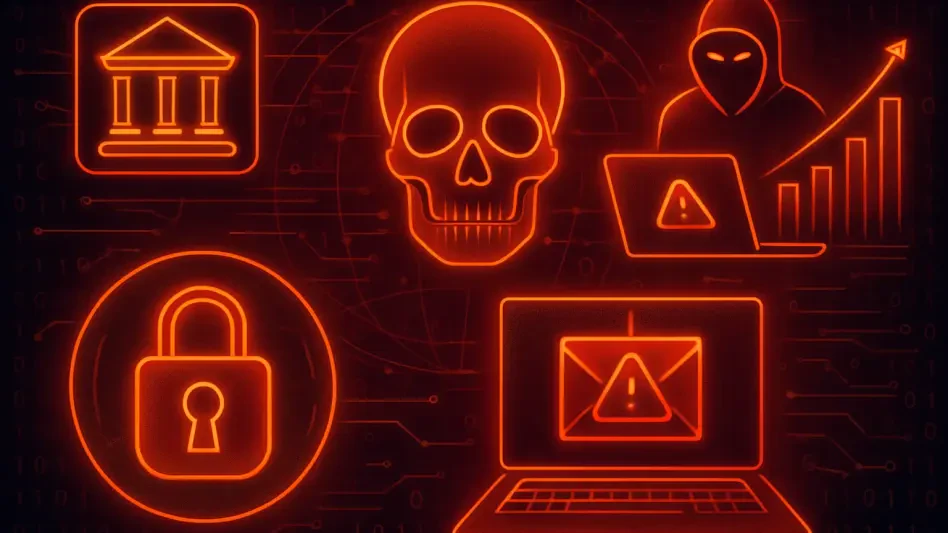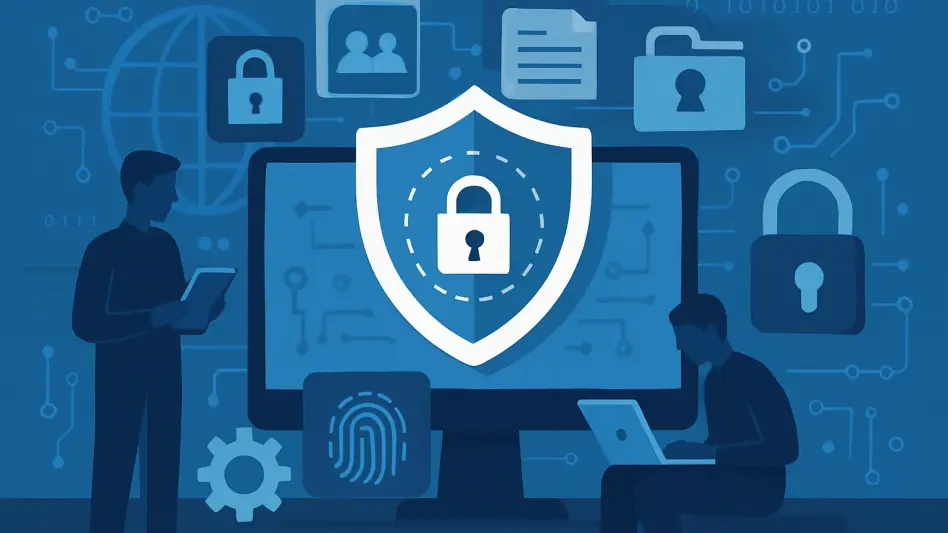Phishing attacks have become alarmingly sophisticated in recent years, using advanced tactics like AI-generated content and deepfake impersonation to deceive even the most vigilant users. Organizations worldwide are facing an ever-growing challenge as cybercriminals exploit artificial intelligence to craft convincing phishing campaigns designed to bypass traditional security measures. This situation is prompting an urgent need to rethink and enhance email security strategies to counter these threats effectively. By integrating AI into email security systems, organizations can significantly bolster their defenses against modern phishing attacks. This article delves into the innovative applications of AI in enhancing email security, offering advanced technical solutions to mitigate phishing risks.
AI-Powered Threat Detection and Behavioral Analysis
AI-powered threat detection has revolutionized email security, enabling the identification of phishing attempts with unprecedented accuracy. Unlike signature-based detection systems that rely on known threats, AI solutions employ machine learning algorithms to analyze patterns and behaviors associated with phishing. These systems are capable of recognizing even the subtlest indicators of a phishing attempt, often from previously unseen sources. By creating detailed user behavior profiles, AI can detect anomalies that may signify a compromised account or malicious activity. This represents a substantial innovation in phishing defense, as it emphasizes analyzing user activity for unusual patterns, such as unexpected login times or access from unknown locations.
Moreover, AI systems can differentiate between legitimate and suspicious activities by learning from vast datasets that include millions of email exchanges. By constantly adapting to new threats, these systems enhance their detection capabilities over time. This behavior-focused approach allows security systems to identify complex spear-phishing attacks and account takeovers that might bypass traditional content filters. Overall, AI-powered threat detection and behavioral analysis form a robust backbone for modern email security systems, offering organizations an advanced tool to proactively guard against phishing.
Generative AI for Enhanced Detection
Generative AI has introduced groundbreaking advancements in both creating and detecting phishing content. AI models now analyze and understand language patterns intricately, allowing them to identify subtle nuances typical of phishing messages. The PEEK (Phishing Evolution Framework) leverages these advancements to set new detection standards, utilizing extensive language models to generate diverse phishing scenarios essential for training AI systems. This method has achieved a notably high success rate, generating phishing samples with an 84.8% success rate compared to just 21.4% for more traditional approaches.
Adversarial training, where the system is exposed to numerous phishing variations to improve detection capability, is a key aspect of this technology. By strengthening their models against these adversarial threats, systems have achieved impressive accuracies and significantly reduced vulnerabilities to phishing techniques. This innovative approach ensures that detection systems maintain effectiveness in the face of ever-evolving phishing tactics. Utilizing generative AI not only fortifies defenses against phishing but also prepares these systems for future attacks, marking a significant leap forward in email security.
Email Authentication Protocols Implementation
Implementing robust email authentication protocols such as SPF (Sender Policy Framework) is crucial in the fight against phishing. SPF records act as the cornerstone of email authentication by specifying which IP addresses are authorized to send emails from a particular domain. Proper SPF configuration helps prevent domain spoofing and enables email servers to verify sender legitimacy, thereby mitigating phishing risks. For instance, a basic SPF setup for a Google Workspace environment can effectively deter unauthorized access.
SPF evaluation results determine how messages should be processed based on their authentication status. Results range from Pass, indicating the message is permitted, to Fail, which rejects it outright. Indeterminate responses like Neutral or None require further action, while TempError suggests temporary failure requiring reevaluation. By understanding these outcomes, organizations can better tailor their email security strategies to align with domain-specific needs, reinforcing their defenses against threats posed by phishing emails.
DKIM Implementation with OpenDKIM and Postfix
DKIM (DomainKeys Identified Mail) enhances email security by assigning digital signatures to outgoing messages, ensuring their authenticity and integrity. To implement DKIM using OpenDKIM and Postfix, organizations must follow structured configurations and procedures. This ensures cryptographic authentication is in place, deterring attempts at phishing. Installation and configuration of OpenDKIM, including editing configuration files for system settings, is fundamental to integrating DKIM. Generating domain-specific cryptographic keys and incorporating these into email servers is crucial to establishing secure communication channels.
Integration with Postfix further strengthens this setup, enacting milter protocol rules that assist in effective email filtering. Accurate key generation, appropriate permissions, and careful structuring of DKIM components create a formidable barrier against phishing. This multifaceted approach, coupled with vigilant monitoring, provides organizations with the tools needed to uphold the security of communicated emails and thwart phishing attempts that exploit email vulnerabilities.
DMARC Policy Implementation
DMARC (Domain-based Message Authentication, Reporting & Conformance) extends email authentication by specifying policy actions on messages that fail authentication checks. Implementing DMARC builds upon SPF and DKIM to create a comprehensive security layer. The deployment strategy typically involves phases, starting with monitoring-only, which provides insight and feedback without taking aggressive action. Gradually increasing enforcement levels to quarantine or reject suspicious emails allows organizations to refine their understanding and adjust configurations.
DMARC policies guide receiving servers on message handling, offering detailed insight into message validity. Comprehensive reporting capabilities alert administrators to issues within configurations, supplying essential feedback to enhance countermeasures. Over time, a progressive DMARC strategy shields organizations effectively, strengthening defenses through adaptability and dynamic response to emerging threats. Incorporating DMARC reveals an organization’s commitment to robust email security, providing clarity and command over message handling and response.
Advanced Content Filtering and Analysis
Advanced content filtering technologies such as YARA rules offer potent solutions for detecting phishing threats within emails. These tools allow for the creation of custom rules aimed at identifying specific indicators of phishing, from suspicious phrases to peculiar URL patterns. Implementing such rules enables organizations to fine-tune their defenses against spear-phishing attempts, effectively minimizing false positives and enhancing detection accuracy. By analyzing email content through targeted rules, companies can swiftly identify phishing attempts, thereby reducing the risk of employee compromise.
Regular updates to filtering technologies and incorporation of cutting-edge machine learning models ensure defenses keep pace with evolving threat landscapes. Tailoring strategies for specific vulnerabilities and leveraging feedback from continuous monitoring are key practices in maintaining robust email security. SpamAssassin integration further refines this approach by implementing custom rules and URL reputations, identifying potential risks efficiently. Collectively, these strategies allow organizations to proactively defend against phishing threats by anticipating and adapting to emerging attack vectors.
Integrated Security Solutions
Comprehensive email security solutions integrate multiple tools and technologies to address various aspects of phishing protection. Combining elements like ClamAV for virus scanning with secure mail filters enables holistic defense strategies that detect and mitigate phishing threats across multiple fronts. This multi-layered approach not only protects against email-borne threats but also safeguards against malware attacks. The versatility of ClamAV, capable of real-time scanning and content filtering, enhances protection against harmful attachments frequently used in phishing.
Incorporating such integrated solutions into existing infrastructure ensures a seamless security system that maintains efficient email processing while defending against cyber threats. Collaborating security tools enable comprehensive protection layers, analyzing, identifying, and neutralizing threats effectively. Continual updates, proper configurations, and streamlined operations are fundamental to ensuring the effectiveness of integrated solutions. By deploying these combined defenses, organizations are empowered to anticipate and neutralize threats before they cause significant harm.
Real-Time Link Protection
Real-time link protection represents a crucial advancement in email security, offering heightened defense against sophisticated phishing tactics. This technology scrutinizes URL links at the moment of click, providing continuous protection even when the nature of a link changes post-delivery. By adopting this proactive measure, organizations protect against phishing schemes that cleverly alter links after emails are received to bypass initial security checks.
Implementing real-time link scanning adds an essential layer of security to email interactions, enhancing organizational vigilance. It helps in identifying time-based attacks, where cybercriminals exploit delays in security systems to deliver malicious content. To incorporate such technology, organizations must ensure systems are agile and capable of adjusting heuristically to dynamic threats. This approach not only strengthens security protocols but builds confidence in email communications, enabling secure exchanges in a constantly evolving cyber threat landscape.
Implementation Best Practices and Monitoring
Implementing robust multi-factor authentication (MFA) protocols can significantly mitigate risk and strengthen security. Even if credentials are compromised via phishing, additional authentication barriers, such as time-sensitive tokens or biometrics, prevent unauthorized access. Properly configuring systems to support MFA reduces exposure to phishing, enhancing overall security. Implementation requires integrating authentication tools across platforms, ensuring a seamless user experience without compromising protection.
Continuous monitoring and incident response capabilities complement these measures by ensuring real-time threat detection. Modern security architectures support these features, empowering organizations to act swiftly by isolating compromised accounts and mitigating risk. Thorough logging and analysis enhance understanding of attack patterns, further informing defense strategies. Engaging in proactive threat assessment, regular training, and simulating phishing exercises increases user awareness and vigilance, crucial components in fortifying organizational defenses.
Actionable Strategies for AI-Driven Phishing Defense
In recent years, phishing attacks have become increasingly sophisticated, employing advanced methods like AI-generated content and deepfake impersonations to trick even the most cautious users. This escalation poses a significant challenge for organizations globally as cybercriminals leverage AI to create compelling phishing campaigns designed to slip past conventional security barriers. As a result, there’s an urgent need to reconsider and improve email security strategies to combat these advanced threats effectively. By incorporating AI into email security systems, organizations can dramatically improve their defenses against contemporary phishing attacks. This piece explores the cutting-edge applications of AI in strengthening email security, offering forward-thinking technical solutions to reduce phishing risks. As cyber threats become more cunning, it is imperative for organizations to stay ahead by implementing AI-driven security measures, ensuring their systems are resilient against evolving phishing schemes and maintaining the integrity of sensitive information.








